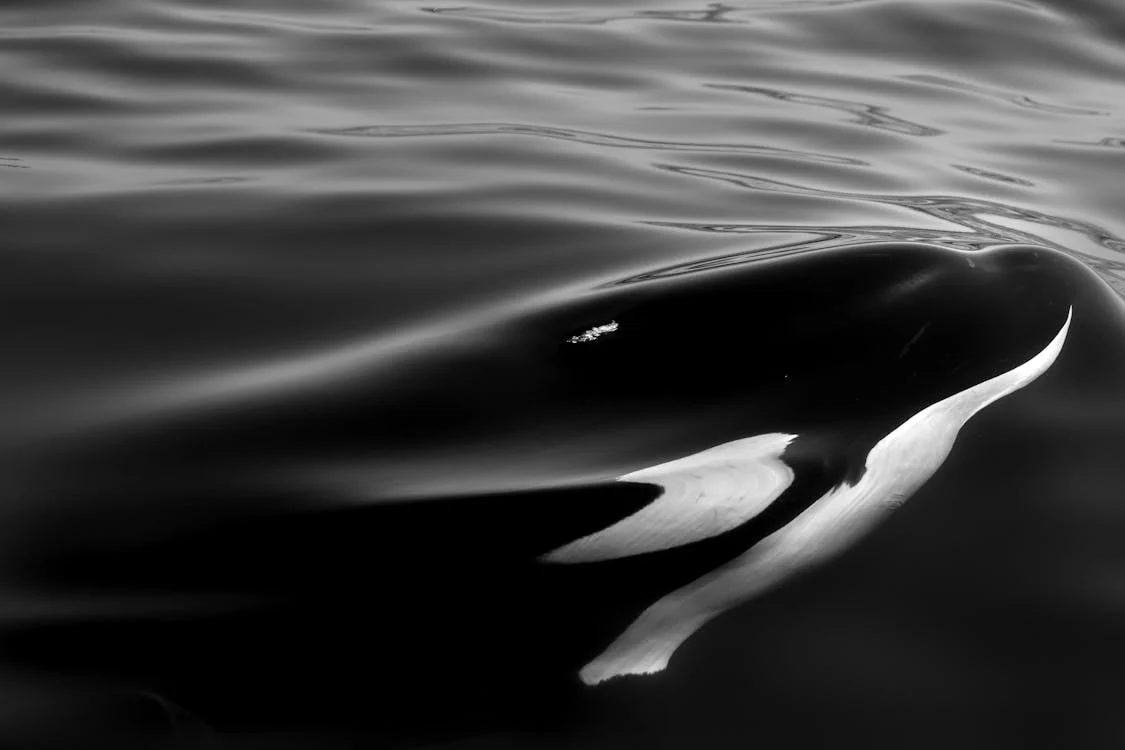Orcas, also known as killer whales (Orcinus orca), are one of the most powerful and fascinating creatures in the ocean. Revered as apex predators, they sit at the top of the food chain, having no natural predators themselves. Despite their fierce reputation, orcas are incredibly intelligent, social animals that demonstrate remarkable cooperation, problem-solving, and communication skills. While their nickname “killer whale” might suggest aggression, this label often misrepresents these complex creatures. This article will explore the truth behind their predatory skills, social behavior, and the common misconceptions that surround them.
Apex Predators of the Ocean
As apex predators, orcas dominate the ocean ecosystem. They have a varied diet, which can include fish, seals, sea birds, squid, and even large marine mammals such as whales. Their hunting tactics vary depending on their prey, but they are known for their intelligence and coordination. Orcas hunt in pods—cohesive family groups—where they utilize highly strategic methods to catch their prey. For example, when hunting seals, orcas have been observed creating waves to knock them off ice floes. They may also work together to corral schools of fish into tight balls, making them easier to consume.
Their ability to hunt large prey, such as blue whales, the largest animals on the planet, is a testament to their strength and tactical superiority. A pod of orcas can surround and attack a blue whale, strategically targeting vulnerable areas until the whale is exhausted. This level of cooperation showcases not just physical power but advanced social intelligence as well.
Misunderstood “Killer” Whales
The name “killer whale” can be traced back to ancient sailors who witnessed orcas hunting larger whales and marine mammals, earning them the title of “whale killers.” Over time, the name was reversed to “killer whales.” Despite the fearsome name, orcas do not pose a significant threat to humans. In the wild, there have been very few documented cases of orcas attacking humans, and most of these incidents are believed to be cases of mistaken identity or curiosity rather than aggression. In fact, orcas have been known to display playful behavior toward humans, such as riding the bow waves of boats or mimicking human behaviors in captivity.
One reason for the misunderstanding of orcas is their portrayal in captivity. In marine parks, orcas are often kept in small enclosures that can affect their behavior, leading to stress and frustration. This can sometimes manifest in aggressive actions, further perpetuating the myth that orcas are inherently dangerous. However, these behaviors are rarely seen in wild orca populations, which live in close-knit pods with strong family bonds. In their natural habitat, orcas are known for their gentle interactions with one another and their sophisticated communication systems.
Social Structure and Intelligence
Orcas are highly social animals, and their complex social structure is comparable to that of elephants or primates. They live in matriarchal pods, where the oldest female typically leads the group. Pods can consist of multiple generations, and orcas stay with their families for life. This strong familial bond is critical to their survival, as pod members rely on each other for hunting, protection, and social interaction.
Orcas are also known for their ability to learn and pass on knowledge, a trait known as culture. Different pods have been observed using distinct hunting techniques, vocalizations, and behaviors. These differences are not just regional but also specific to individual pods, much like human cultures vary between different groups. Orcas even have dialects within their vocalizations that allow them to communicate with their pod while distinguishing themselves from other pods.
Their cognitive abilities are among the most advanced in the animal kingdom. Orcas have large, complex brains, and studies have shown that they possess self-awareness, problem-solving skills, and the ability to use tools. In captivity, orcas have demonstrated the capacity to understand human gestures and language, further proving their intelligence.
Conservation and the Future of Orcas
While orcas may reign as the top predators in the ocean, they are not invulnerable. Human activities such as overfishing, pollution, and habitat destruction have affected orca populations worldwide. One of the most significant threats to orcas is the depletion of their primary food sources, such as salmon, due to overfishing and climate change. Pollution, particularly plastic and toxic chemicals, also poses a serious risk, as these contaminants can accumulate in the tissues of orcas and weaken their immune systems.
Captivity remains a controversial issue in orca conservation. Many activists and scientists argue that orcas should not be kept in captivity, as the conditions often lead to psychological and physical health problems. There have been increasing efforts to rehabilitate captive orcas and return them to the wild, as well as to protect orca habitats and food sources.
Conclusion
Orcas are undeniably one of the ocean’s most formidable predators, but they are also complex, intelligent, and social beings that deserve to be understood beyond their “killer” reputation. While they dominate the marine food chain, they do not pose a threat to humans and, in fact, have much in common with us in terms of social structure and intelligence. As we continue to learn more about orcas, it is essential to appreciate them for the incredible creatures they are and to work towards protecting their habitats for future generations.

